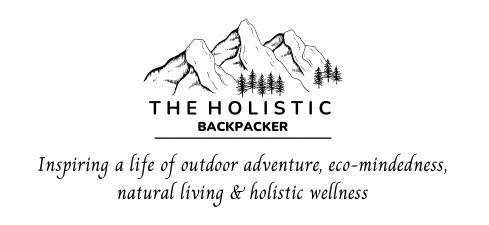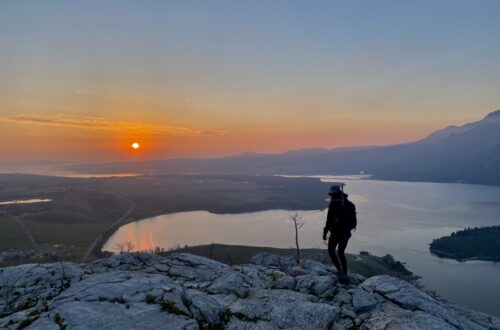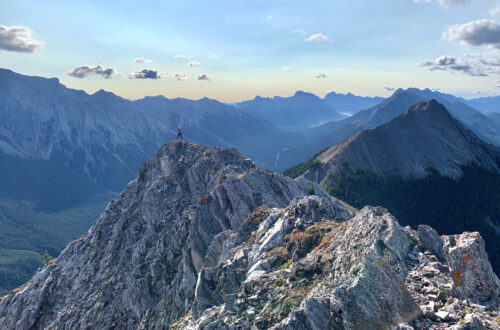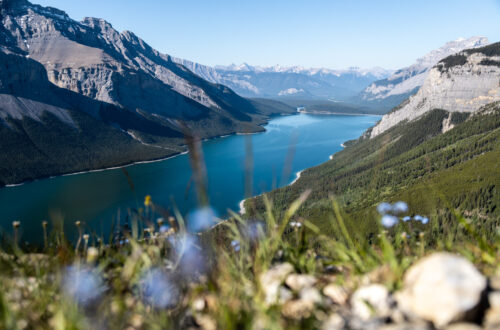
Local’s Guide to Living in Banff: Everything you Need to Know
For myself and many others, Banff’s dreamy mountains and alpine lakes are not just a vacation spot – but a year round home. I spent years living in Banff and in this post I’ll tell you everything you need to know about living in Banff from getting a job to finding a home to useful community resources.
I moved to Banff alone and had some of the best years of my life here. In addition to the outdoorsy lifestyle that allows you to hike, camp, and ski daily, there’s also a young international community here. This makes for a very social atmosphere and it also makes it very easy to make friends in Banff.
As with every place though, there are downfalls. In addition to Banff resources for locals, information about what the community is like in Banff, etc, etc, etc. I’ll also point out a few not-so-great things about living in town so you’re 100% informed before making the move to Banff.
Skip Ahead:
- FAQ’s: Moving to Banff
- Lifestyle in Banff
- Social life in Banff
- Best place to live in the Rockies
- How to find housing in Banff
- How to find a job in Banff
- Banff community resources for locals
- Where to shop in Banff
- Parking, driving, and public transportation in Banff
- Post office and mail in Banff
- Documents & inter-Provincial paperwork
- Downfalls of living in Banff
As you read this post, please consider clicking the links throughout. These are affiliate links which means when you book a hotel or purchase a product, I make a small commission at no additional cost to you (full disclosure). These commissions fund The Holistic Backpacker and help me write more blog posts.
Thank you for supporting my work!
Banff Google Map: 600+ Pins
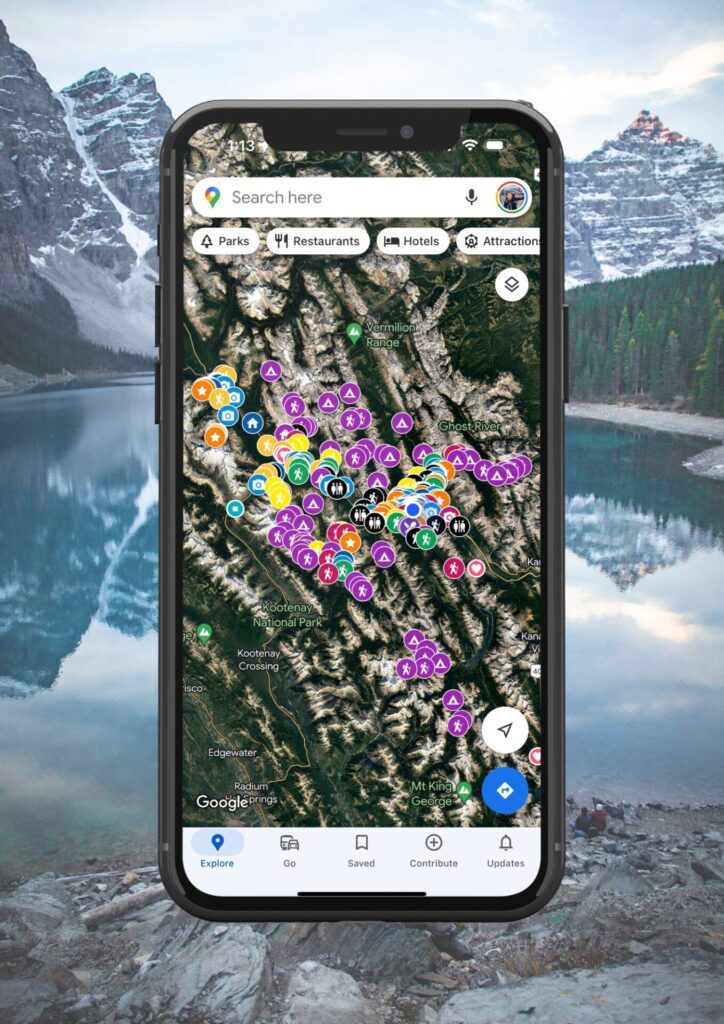
Get my 600+ Banff recommendations saved to your Google Maps app
Outdoors: 100+ hiking trails, backcountry campgrounds, ski resorts, waterfalls & lakes
Planning: lodging, restaurants, public washrooms & transit hubs
Things to do: tours, viewpoints & unique activities
I lived in Banff for years and know all the best spots!
My Featured Banff Blogs
Travel Guides
Banff Activities
Quick Banff Guide
First time visiting Canada? This page outlines all my travel tips for those new to Canada.
When to visit: this post breaks down each month in Banff with average temperatures and corresponding activities.
How to get to Banff: fly into Calgary International Airport. From here, rent a car (what I recommend), RV, or take one of the following shuttles to Banff:
- Budget: On-It runs during the summer months and Pop-a-Ride is a ride-share program. You can use my Poparide link to save $5 on your first trip.
- Professional shuttles: Banff Airporter and Brewster.
- Car rental: having access to a car is the best way to travel to/from/within Banff. This site compares the best local rates.
Best Activities in Banff: here are all my recommendations for the best tours, activities, and unique experiences in Banff & beyond.
Moraine Lake or Lake Louise: read my guide for how to get there with the new road closures. If you want to see Moraine Lake at sunrise, you can book a shuttle here.
Lodging & Camping: Here’s my guide for hotels in Banff (Organized by Category). If you’re visiting during peak summer (mid June to early September), make your lodging reservations FAR in advance. Front country and backcountry camping reservations must be made on the Parks Canada reservation system. The system typically opens in January and it’s recommended you make reservations then.
Reservations: for activities and restaurants should be made well in advance during summer. Get Your Guide and Viator are popular tour booking platforms whereas OpenTable is used for restaurants.
Parks Pass: You’ll need a National Park Pass for your vehicle for each day you’re in Banff. Passes can be purchased at the East Parks Gates, the Visitor Centre, or online. If you’ll be in any of Canada’s National Parks for more than 7 days in a 365 day period, an annual Discovery Pass offers a better rate than purchasing individual day passes.
Roam Transit: once you arrive in Banff, use the local transit service as much as possible to avoid parking issues. There are bus lines within town, plus lines to popular spots like Lake Louise and Johnston Canyon. The bus to Lake Louise should be reserved in advance.
Parking: the best spot to park is the free lot next to the train station. More information about parking in town can be found here and parking fees can be paid here. Bylaw is strict, so ensure you’re following parking rules exactly.
Wildlife Safety: 11 ways to stay safe from wildlife, bear safety, & bear basics.
FAQ’s: Moving to Banff
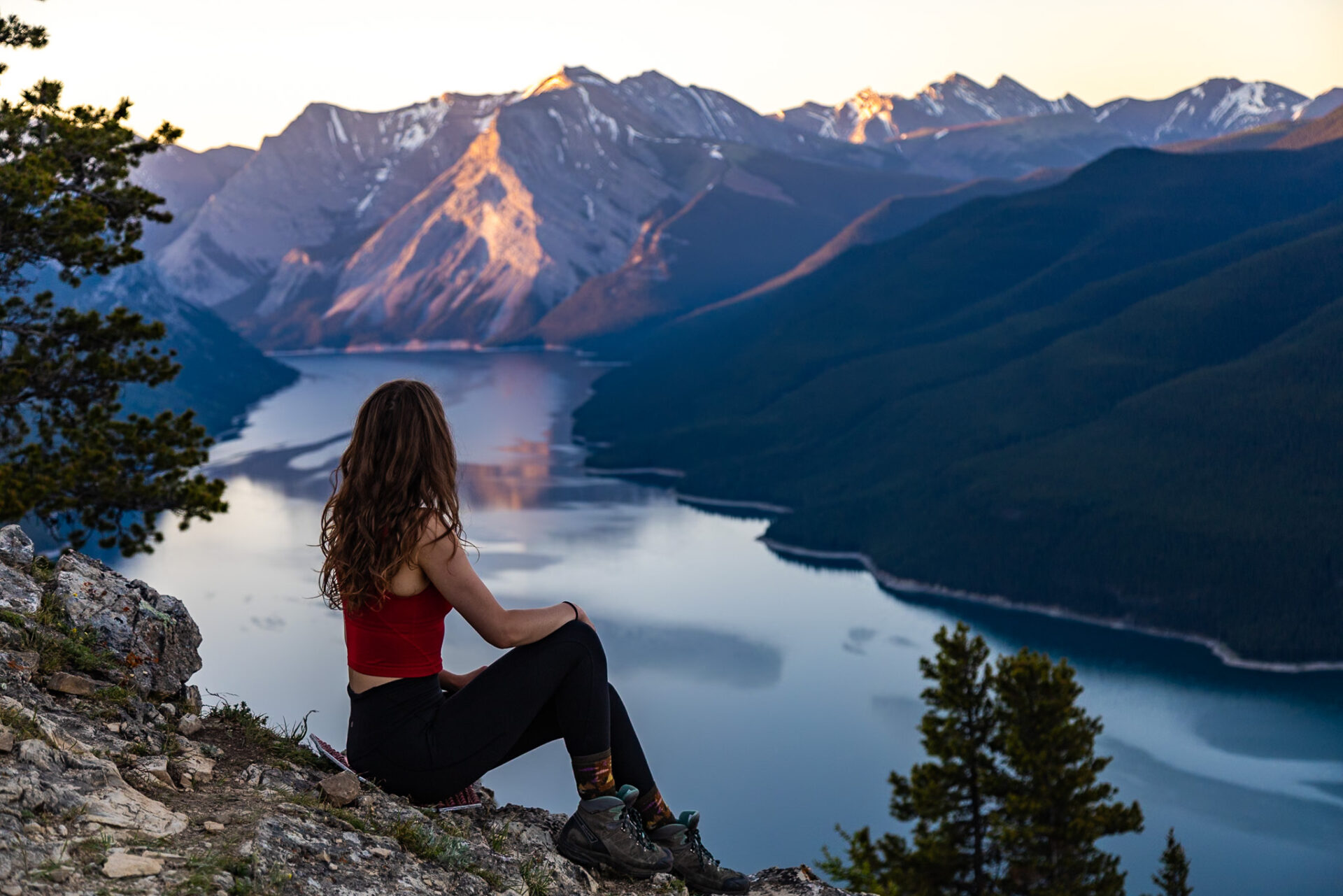
Can I move to Banff alone? Is it easy to make friends in Banff?
Absolutely! I moved to Banff alone and made lifelong friends there. It took no time at all to meet people. The easiest way to meet people in Banff is to start work or get involved with community events.
Is it worth it to move to Banff?
Yes. Banff offers a really unique outdoor lifestyle and the local community constantly changes due the transient crowd it attracts. Despite high prices and tourism levels, Banff is an epic place to live.
What are similar places to Banff that would make good alternatives to live?
I list all those options here. Canmore would be the best alternative option.
Do I need to work if I live in Banff?
Yes. You are required to work if you live in Banff.
When is the best time of year to move to Banff?
Summer and winter are the two busiest times of year for seasonal workers. Typically people move to Banff during the shoulder seasons so they’re fully established by the time either summer or winter comes around.
Is Banff more for tourists or can I live there?
Banff is designed for tourism, but a growing local population is there too. You can definitely live in Banff or just come for a visit.
Is it expensive to live in Banff?
Yes. Rent in Banff is very pricey and purchasing local groceries or going out to eat definitely has an unspoken “tourist tax” associated with it. There are plenty of free activities around though like hiking or spending time at the lake where you can save some $.
Is it easy to find a job in Banff?
Yes and no. The job market fluctuates in Banff constantly meaning sometimes it’s easy to find a job in Banff and other times it’s near impossible.
Should I move to Canmore or Banff?
That totally depends on what you’re looking to get out of the experience. I break down whether it’s better to live in Banff or Canmore below.
Top Tours & Excursions in Banff
Banff Gondola – epic views from the top of Sulphur Mountain.
Banff Hop on Hop off – explore the park at your own pace.
Lake Minnewanka Cruise – take a scenic boat ride down the largest lake in Banff.
Moraine Lake sunrise – chartered bus to see alpenglow on Canada’s most beautiful lake.
Norquay via ferrata – epic beginner friendly climbing route across iron bars on Mt Norquay.
Sunshine Meadows Gondola – find wild alpine flowers and hike around pristine alpine lakes.
Click here for a complete list of the Banff tours I recommend:
Banff Lifestyle: What to Expect
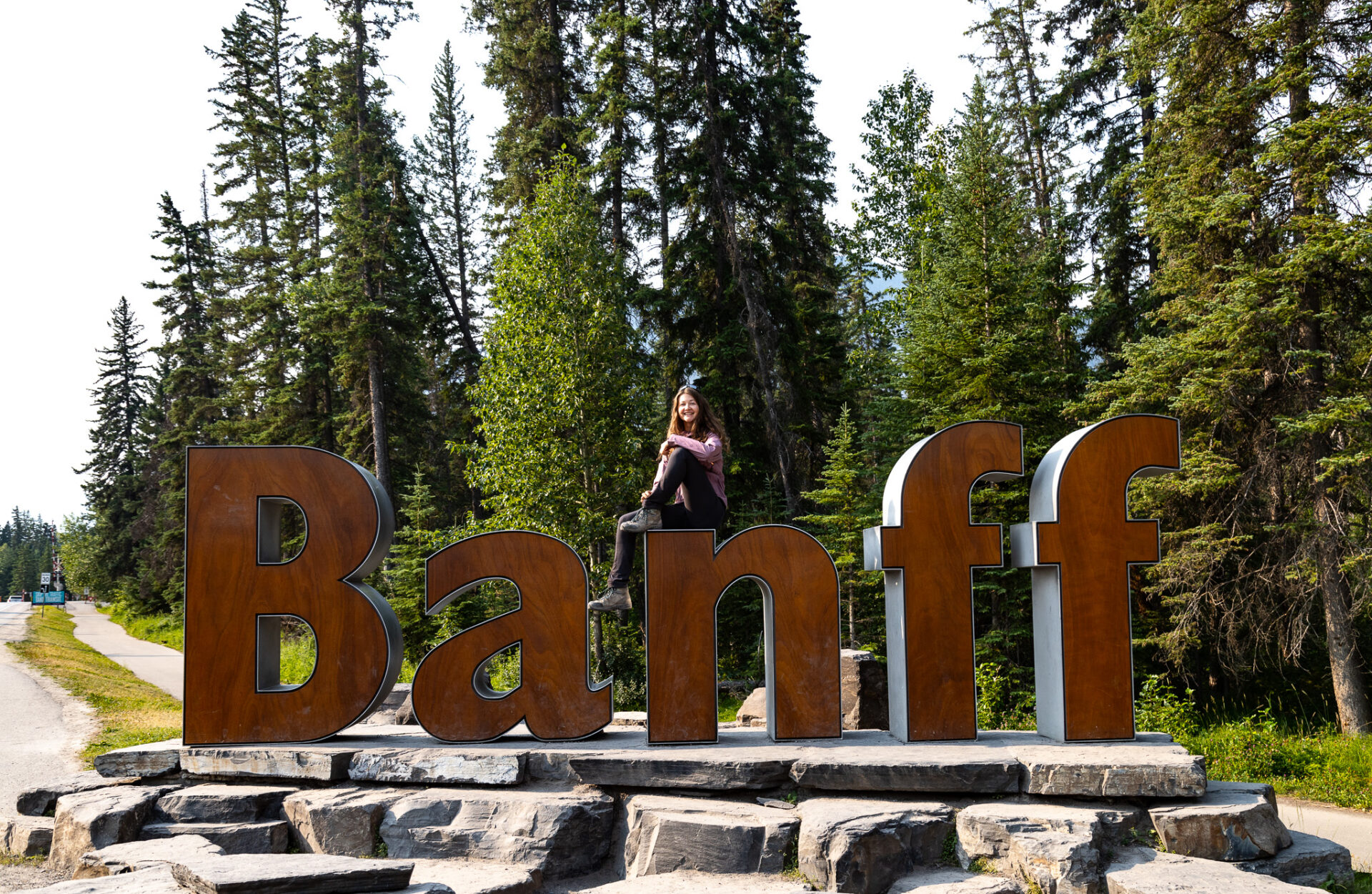
Before getting into the nitty-gritty “living in Banff stuff,” let’s introduce you to the town. Banff sits in the middle of one of the most beautiful mountain ranges in the world – the Canadian Rockies. This means just out your doorstep you’ll have stunning mountain views that people travel across the world to see.
Adding onto that – just steps out your front door you’ll also find world class hiking trails, crystal clear blue lakes, and wildlife wandering through your front yard. This place is literally a postcard. When you live in Banff you can expect to spend all your time off work hiking, skiing, camping – just generally enjoying the epic mountain scenery with your newly-made international friends.
People call it the “Banff Bubble.” When you live in Banff you totally get absorbed in the outdoorsy, fun lifestyle that exists here and you kind of just forget about the rest of the world for a while.
Banff is a small touristy town, but it’s only 1.5hrs out from the Calgary. This means you have a big city nearby for shopping and running errands and also access to one of Canada’s largest international airports. The location of Banff is totally a dream if you’re an outdoorsy person who loves to travel, but also have access to city amenities.
If you’re looking for things to do when you live in Banff, you can start here:
- Here are my Banff hiking guides
- Here are my Banff backpacking guides
- 50+ Things to do in Banff in Summer
- 30+ Things to do in Banff in Winter
- Here’s my complete Icefields Parkway guide
- Local’s guide to skiing Sunshine Village
Connect via socials:
Sign up for emails to receive a 25% discount on my travel maps.
Taylor ♡
Social Life in Banff & Community Vibe
Moving cities is kind of like dating – so let’s get to know you, Banff.

Banff is a small tourist town right in the middle of the mountains. This means Banff attracts people from all over the world who are interested in skiing, hiking and the outdoors. Generally everyone moves to Banff for a similar reason which means it’s super easy to make connections and form new friendships here.
If you’re worried about moving to Banff solo – don’t be! Everyone in town knows each other, so as soon as you start work you’ll meet people who’ll introduce you to their friends and that continues to spiral until you know a large population of the locals living in Banff.
The local community is made up of Australians, Britts, and Canadians with sprinkles of kiwi, various Europeans, and Asian folk. Most Canadians in Banff are from Ontario (myself included). You can expect the local community in Banff to be from all walks of life, but generally anyone who moves to Banff is quite interesting and has great stories to tell. The Banff locals are largely ski bums, hikers, and world travellers.
The Banff community is typically very helpful toward one another and we all collectively bond over our mutual distain for tourists (even though our town runs on tourism)!
Banff is also a large party destination which means a huge portion of the younger population in Banff is there to “get a little wild” on their working holiday visas. Unfortunately drug use runs rampant in Banff. It’s very easy to get caught up in the whole party scene here, so just be mindful that this lifestyle “isn’t normal.” It’s easier than we think to forget that sometimes.
Banff Google Map: 600+ Pins

Get my 600+ Banff recommendations saved to your Google Maps app
Outdoors: 100+ hiking trails, backcountry campgrounds, ski resorts, waterfalls & lakes
Planning: lodging, restaurants, public washrooms & transit hubs
Things to do: tours, viewpoints & unique activities
I lived in Banff for years and know all the best spots!
Where Should you Live in the Rockies?
Before I tell you more about living in Banff, I’d like to note there are a few similar places to Banff that are worth mentioning for living-purposes.
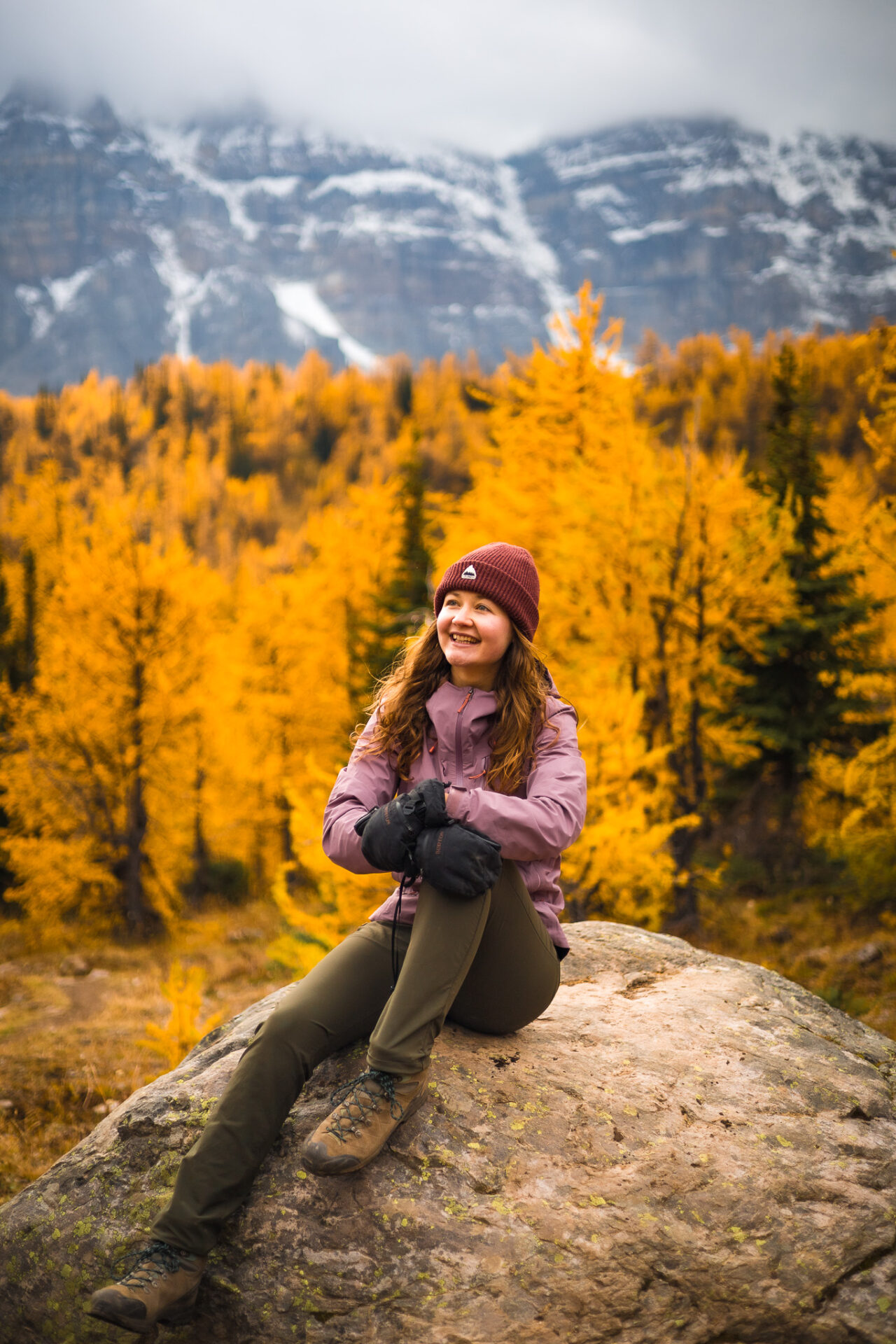
Banff – is my #1 recommendation if you’re moving solo, planning to live in the mountains for a short period, or looking for a bigger party scene. Banff is full of tourists and young internationals on working holiday visas. There’s great public transit in Banff to hiking trails and the local ski resorts, plus a lot of community programs designed to aid young people.
Canmore – located 20 minutes from Banff, Canmore has a more permanent population, less of a young party crowd, and more amenities/stores. It’s not in the national park which means rules are a bit more lax here and there are less tourists (for now). If you’re looking to move to the mountains for a longer period of time or don’t want to be directly involved with a young party scene, Canmore is a better choice than Banff. You’ll want to consider buying a car if you live in Canmore in winter as you’ll have to take 2, sometimes 3 public buses to get to the ski resorts without one.
Lake Louise – Lake Louise is a really gorgeous spot, but the permanent local population is small and there’s only 1 tiny, expensive grocery store in town. It’s a very quiet town and you’ll definitely want to buy a car if you live here. Lake Louise would be better to live in during winter as the Lake Louise Ski Resort is the best resort in Banff.
Jasper National Park – Jasper is a small-scale Banff in every way possible. Doing a season (summer or winter) in jasper previously would have been a great choice, however wildfires burned parts of the town in summer 2024. Rebuilding the town will be a process and the town will not be running at full capacity for years to come.
Similar Options in British Columbia:
The Canadian Rockies have some of the best tourist towns to live in, but British Columbia has some killer options too.
- Whistler: huge ski resort and similar working holiday/party town vibe as Banff.
- Revelstoke: Great for winters. Quiet town, great skiing, not a big party place.
- Kelowna: skiing, warm summers, lots of internationals and local Canadians.
- Squamish: great summer location for hiking and climbing
- Tofino: located on Vancouver Island. Better in summer for sure, but epic surfing in the winter and a big international population.
- Golden: very small town, but beautiful nature.
- Ski resorts good for 1 season: Kicking Horse (serious skiers), Big White (party), Fernie and Sun Peaks offer a mix of everything.
How to Find Housing in Banff
As time progresses, so does Banff’s housing crisis. It’s never been more difficult to find a place to live in Banff. My advice it to start looking for housing months in advance.

You’ll find when you move to Banff, finding a place to live will be the most difficult part. We have this thing in Banff where you need to work to live in town. So, if you don’t have a job you can’t live in Banff. This can be tricky as some employers need you to have housing before offering you a job and almost all landlords require you to have a job before allowing you to move in. Try figuring that one out.
Housing in Banff is often shared small houses or shared apartments. Private studios are hard to come by and very expensive.
My advice is don’t move to Banff if you don’t have housing set up. Previously people would just move to Banff and figure it out as they go. These times have passed. The times of homelessness and landlords selling your home and kicking you out unexpectedly have arrived.
There are a few ways to find housing in Banff. Knowing people is the easiest way to find housing in Banff, but if you’re new to town, you’ll have to utilize the following resources.
Staff Accommodation – many local employers and businesses offer staff accommodation in Banff at a more affordable rate. If you only plan to live in Banff a short time, staff accommodation is a great option. Hotels and tourism based companies often always have staff accom available.
Facebook – everyone in Banff and Canmore lists their rentals on Bow Valley Home Finder. This page is the main way to find housing in Banff. Keep a constant eye on new posts and post your own ad in the group with your photo and some info about yourself.
- More Banff housing Facebook pages: Bow Valley Nest Finders, Banff Home Finder, Bow Valley Home Finders 2.0, Bow Valley Property Rentals
Short-Term Accommodations – there are 3 hostels in town: The Samesun, Banff International, and the HI Banff Alpine Centre. Typically in the shoulder seasons (spring and fall) they offer cheaper longterm rates for those new to Banff looking for housing as a kind of “in-between” option.
If all the above fails and you’re still stuck, the town has put together this guide with more information about finding housing in Banff.

How Much Does Rent Cost in Banff?
A lot.
As time goes on rent continues to increase to unimaginable prices. I’ve seen rent as high as $1,600 CAD for a small room in a shared house. Around $1,000 – $1,200 for a room in a shared house seems to be the new normal rent price in Banff.
If you’ve been in town for a while and know people you can usually find a better rate. However if you’re new to town, expect to land on the higher end of the scale.
Some tips for finding cheap accommodations in Banff are:
- Search for staff accommodation. Although not ideal to live in staff accommodation, it’s one of the more affordable options.
- Search for a place with friends. This isn’t always widely available, however if you can find an empty house and split it with your friends you can ensure rent is divided evenly.
- Find a partner. Sharing a room is easily the cheapest housing oping in Banff. So go find yourself a boyfriend or girlfriend!
How to Find a Job in Banff
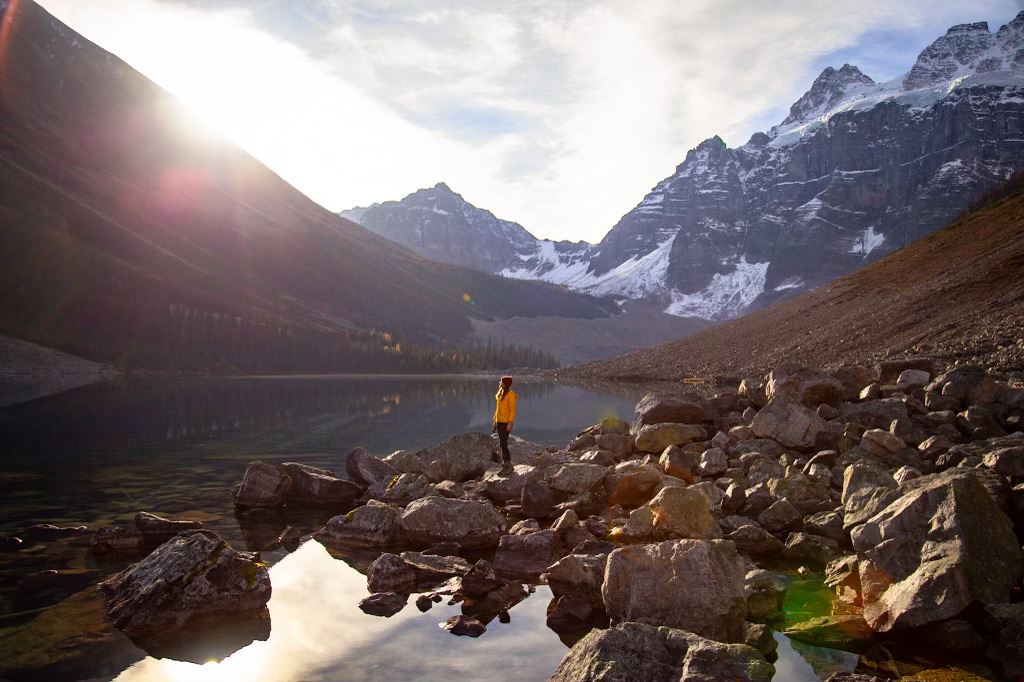
The job market in Banff is constantly fluctuating. Sometimes local businesses are dying for workers, other times Banff newcomers are struggling to find work. Keep in mind, having a job is necessary to live in Banff.
The best time to apply for work in Banff is during spring or fall right before the busy summer and winter tourist periods. Many people in town switch jobs each season as a lot of work in Banff is seasonally dependant.
To find a job in Banff, you’ll want to exhaust the following options:
- Indeed is the largest online job finding network in Canada. Apply for as many jobs as possible just to see what comes up.
- Look for employment pages on local business websites. Oftentimes local businesses will have career opportunities listed here.
- If you really want to work for a specific company, email your resume or drop one off in person.
Employment Options in Banff
Banff is a tourist town which means many jobs are hospitality based. Aside from specialized careers, the following entry-level jobs are available in town:
- Highest paying jobs in Banff – anything in the serving industry or working for Parks Canada
- Fun jobs in Banff – tour guide
- Low paying jobs, but typically offer staff accommodation – retail, ski resorts, any business owned by Pursuit (the Gondola, Lake Minnewanka, etc), and hotels. The Fairmont is one of the better hotels to work for in town as they offer their employees all kinds of perks
Here’s my breakdown of what it’s like to work at Sunshine Village and the Banff Gondola
Banff Community Resources for Locals
Banff has one of the most extensive community resource programs I’ve seen. Here’s a quick breakdown of everything the town offers for those living in Banff + a few locally run programs.
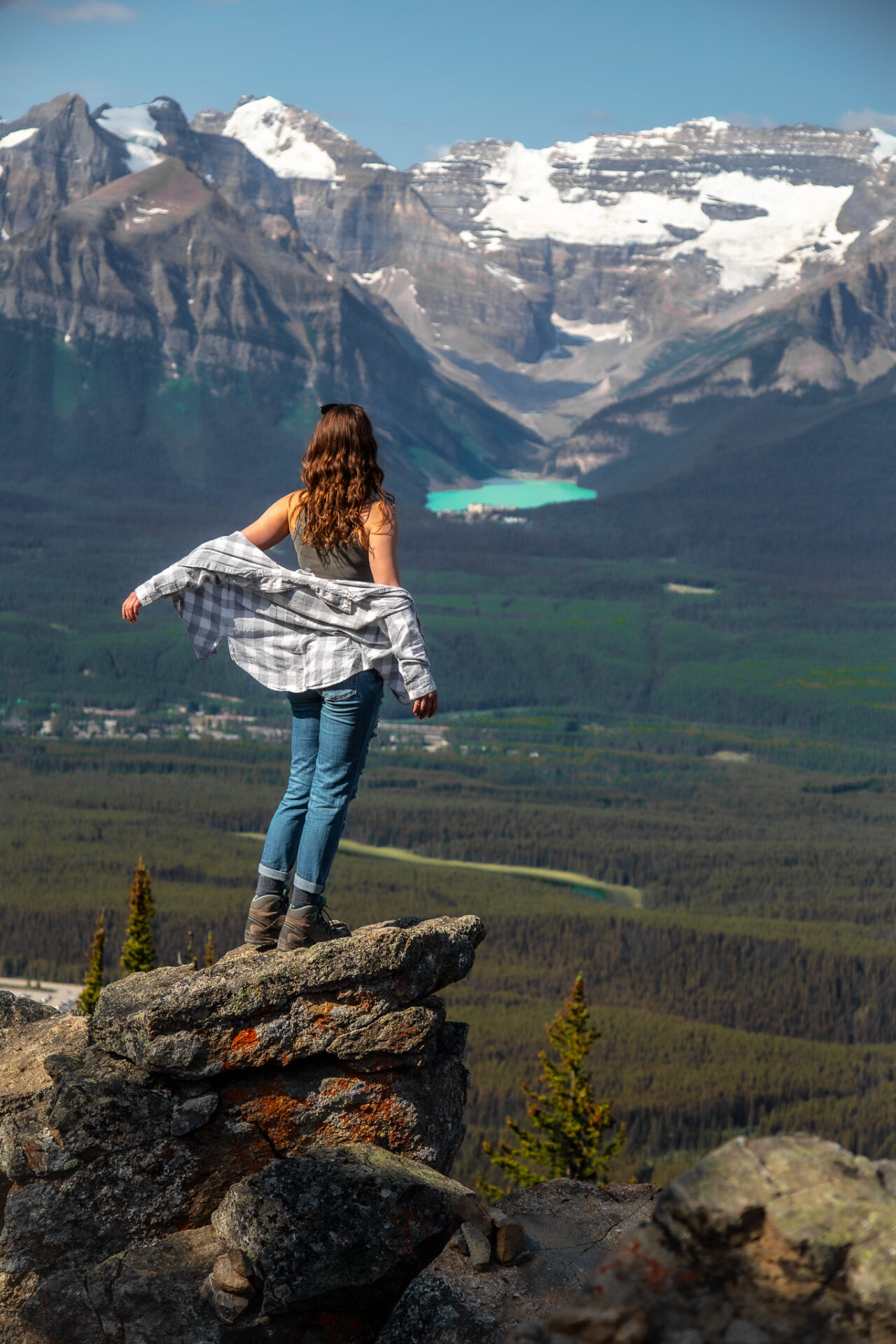
The Banff Food Rescue is discounted food resource program in Banff. It happens a few times a week in the basement of Sundance Mall. Donate $5 and get a couple bags of food.
BanffLife offers fun, subsidized social and recreational activities to help connect the community. You can learn to ice climb, take an avalanche course, or go backcountry skiing for an extremely reasonable price. Sign up well in advance as spots are limited.
Banff Access Program – if you can prove you’re living in Banff and making under a certain annual income you’re eligible for all kinds of local discounts for things like food, bus passes, Sally Borden memberships, etc.
The Fenlands Community Centre offers all kinds of drop in activities from arts and crafts to indoor sports like badminton/yoga, and a fitness room. You can purchase a cheap Pauw Pass which gives you unlimited access to these resources.
The Banff Ambassador Program is a one-time pass that gives you access to some epic activities for free/extremely discounted prices. You can grab free Lake Louise canoe rentals, go up to Sunshine Meadows, etc, etc, etc. All you have to do is sit through a 1hr orientation meeting.
The Banff Farmer’s Market typically runs every Wednesday from late May to early October. The market has fresh grown fruit/veg from British Columbia, live music, local artisan crafts, natural skin/hair products, art, and so much more. The market runs on Thursdays in Canmore too.
Overheard in Banff is Banff’s main town Facebook page. Locals post all the time about town events or weird stuff they’ve seen tourists do. It’s a nice way to stay connected to the town community.
Banff Google Map: 600+ Pins

Get my 600+ Banff recommendations saved to your Google Maps app
Outdoors: 100+ hiking trails, backcountry campgrounds, ski resorts, waterfalls & lakes
Planning: lodging, restaurants, public washrooms & transit hubs
Things to do: tours, viewpoints & unique activities
I lived in Banff for years and know all the best spots!
Where to Shop in Banff
Banff is a small mountain town in a national park. Needless to say, shopping resources are limited. Purchasing things like bedding or underwear is near impossible, so plan to use the resources below to buy what you need.

Canmore has more options than Banff when it comes to shopping related missions. There are 2 larger grocery stores in Canmore (Save On being the most popular) and a Canadian Tire. They’ve got Nutters for anything health related (supplements, skincare oils, grass fed meats) and plenty of gear related shops for hiking, climbing, etc.
Calgary is the best shopping option for big hauls and anything you’re not able to find in Banff/Canmore. Every time I think of a food item or resource I need, I write it on a list on my phone. Every 6 or 12 months I go to Calgary and do a massive Costco/Walmart shop with supplies for the following 6 or 12 months. Us Banff locals like to avoid Calgary as much as possible, but we do rely on city amenities here and there.
Banff Buy & Sell is the main marketplace-based Facebook group in Banff. Banff is a very transient town, so people are constantly coming and going and selling everything they own in the meantime. You’ll find some gems on Banff Buy & Sell: used ski equipment, cheap furniture, nice clothing, odds and ends for the house. Always check Banff Buy & Sell before buying new.
Amazon is unfortunately a shopping resource that myself and the other Banff locals use frequently. They deliver straight to your door which is unusual for Banff (more about that later).
There are also a few handy thrift stores in Banff and Canmore:
- Crossways in Canmore is my go-to. They’ve got everything from kitchenware to clothing to furniture to books and games.
- Last Temptation in Banff has vintage clothing. I find their clothing is a bit too funky or ratty for my personal style, however when it comes to Halloween, Last Temptation somehow has everything you need to put together an epic costume.
- Rundle United Thrift in Banff is a small scale version of Crossways. They had a fire in spring of 2024 and are closed until further notice. You can check for their opening status here.
Parking, Driving & Public Transportation in Banff
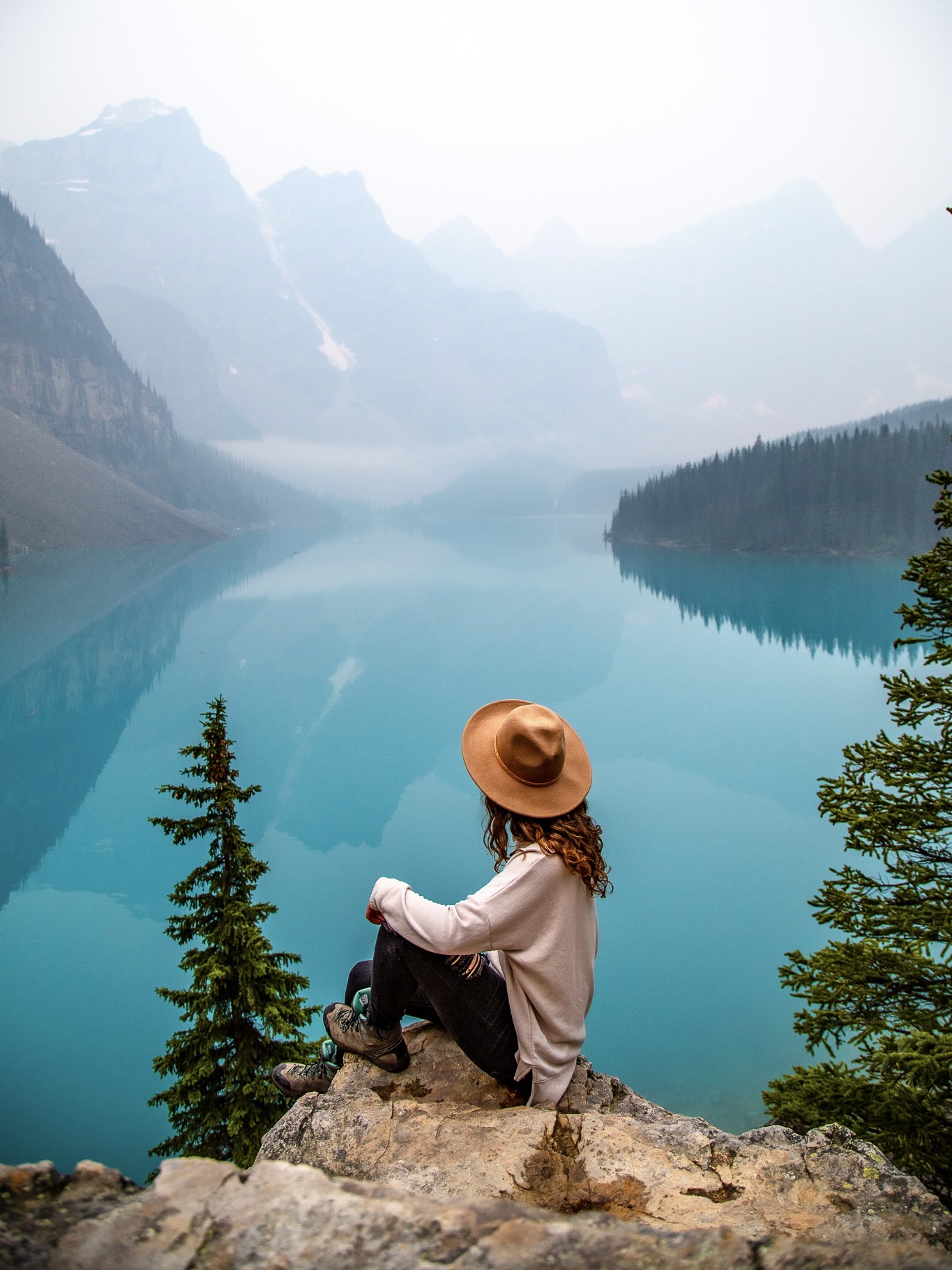
If you move to Banff you don’t need a car, however it is very helpful to have one. Banff has a great public transportation system run by Roam Transit with routes to Canmore, Lake Louise, Lake Minnewanka, etc. If you refer to my community resources section above, you’ll find a link to apply for discounted bus passes under the “access program” tab.
Here’s my guide for travelling Banff without a car & 50+ hikes accessible via bus
Locals can apply for a free 6 month resident bus pass at the visitor centre if they can prove they both live in Banff and work in Banff. The free routes include routes 1, 2, 4, and 6.
If you’re moving to Banff with a car, you’ll need a National Parks Pass to display in your windshield. You can get a free residents pass from the visitor centre, however if you plan to venture outside Banff to any other national parks you’ll need a Discovery Pass. You can purchase this at this visitor centre as well.
If you own a car in Banff you’ll also need to apply for a resident parking pass. Without this you’re not permitted to park on residential streets and you will be ticketed. Parking rules are constantly changing, so I’d recommend looking at this page for the most up-to-date information regarding parking rules for residential roads and in the paid lots downtown.
I recommend taking the bus in Banff over driving, even if you have your own car. Parking is chaotic at best during summer and in the winter temperatures are so cold it’s not worth starting your car up for the quick drive into town.
Post Office & Mail in Banff
Mail is one of the most confusing things you’ll have to deal with during your time spent living in Banff. Since Banff is national park, mailing is handled differently here.
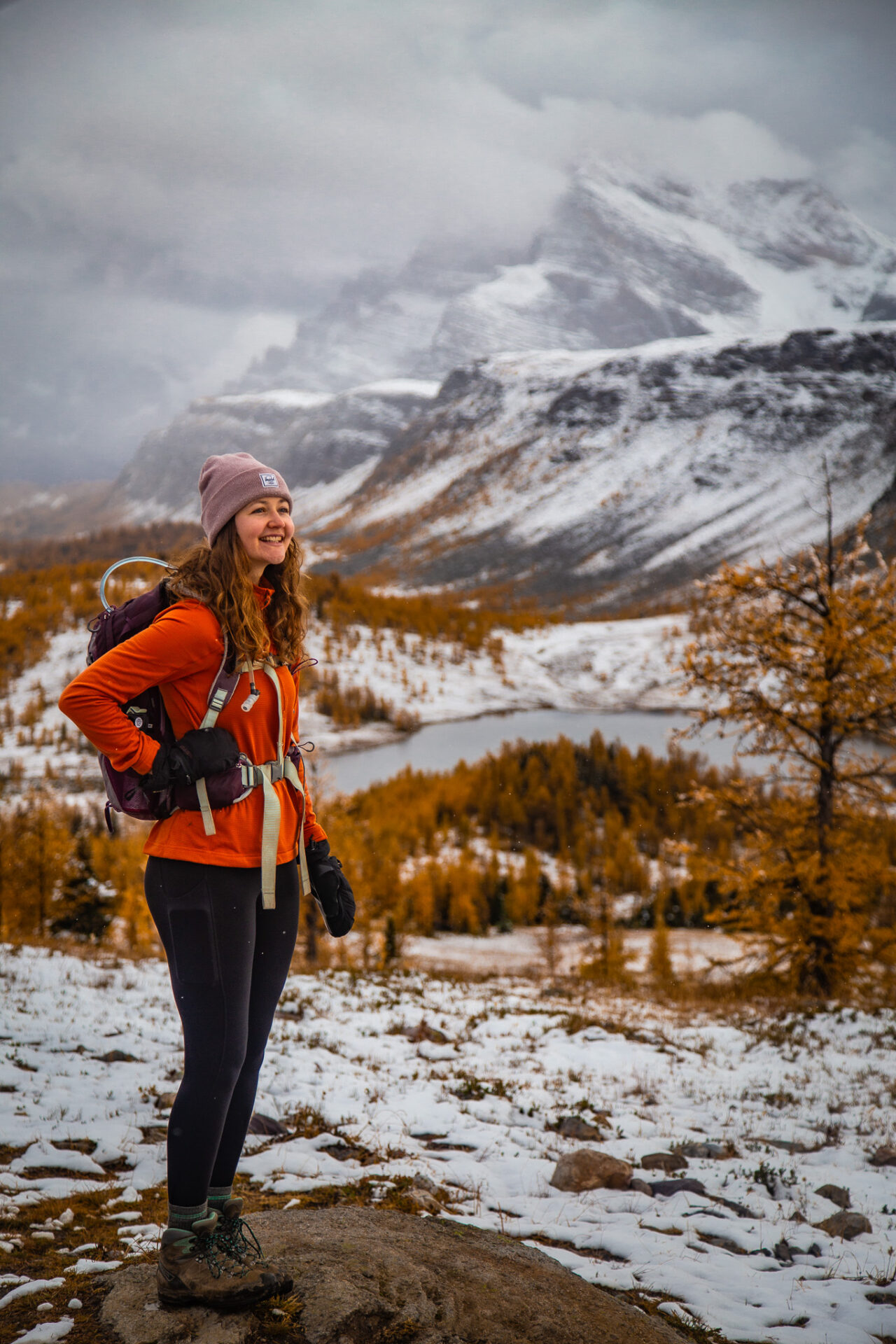
There’s one central Canada Post office located here. Typically the house you move into has a PO BOX set up and you’ll be added on. You’ll pick up your mail here which will sometimes go to your box and other times to the main counter. You must have photo ID to pick up a package, otherwise they’ll send you away.
Canada Post packages go to the Canada Post office, Amazon is shipped directly to your front door, and UPS/FedEx ends up at one of three places: the post office, your front door, or the DCM Centre by the Fairmont (GPS). In saying this, sometimes the packages won’t go where they’re expected to and you’ll have to call around to track them down. It’s super fun when this happens.
You can also use a GD box (general delivery), however sometimes you need to pay for the box and other times you don’t. There are also certain rules about how long you can use GD vs extending it. It’s very confusing, so I would recommend going straight to the post office as soon as you move to Banff to sort your mail situation out.
Documents & Inter-Provincial Paperwork
If you’re moving to Banff from another province, there’s a lot for paperwork you’ll need to switch over. Luckily you’ll only have to switch things over if you’re out of your home province for more than 3 months (90 days). If you’re just popping in and out, don’t worry about it
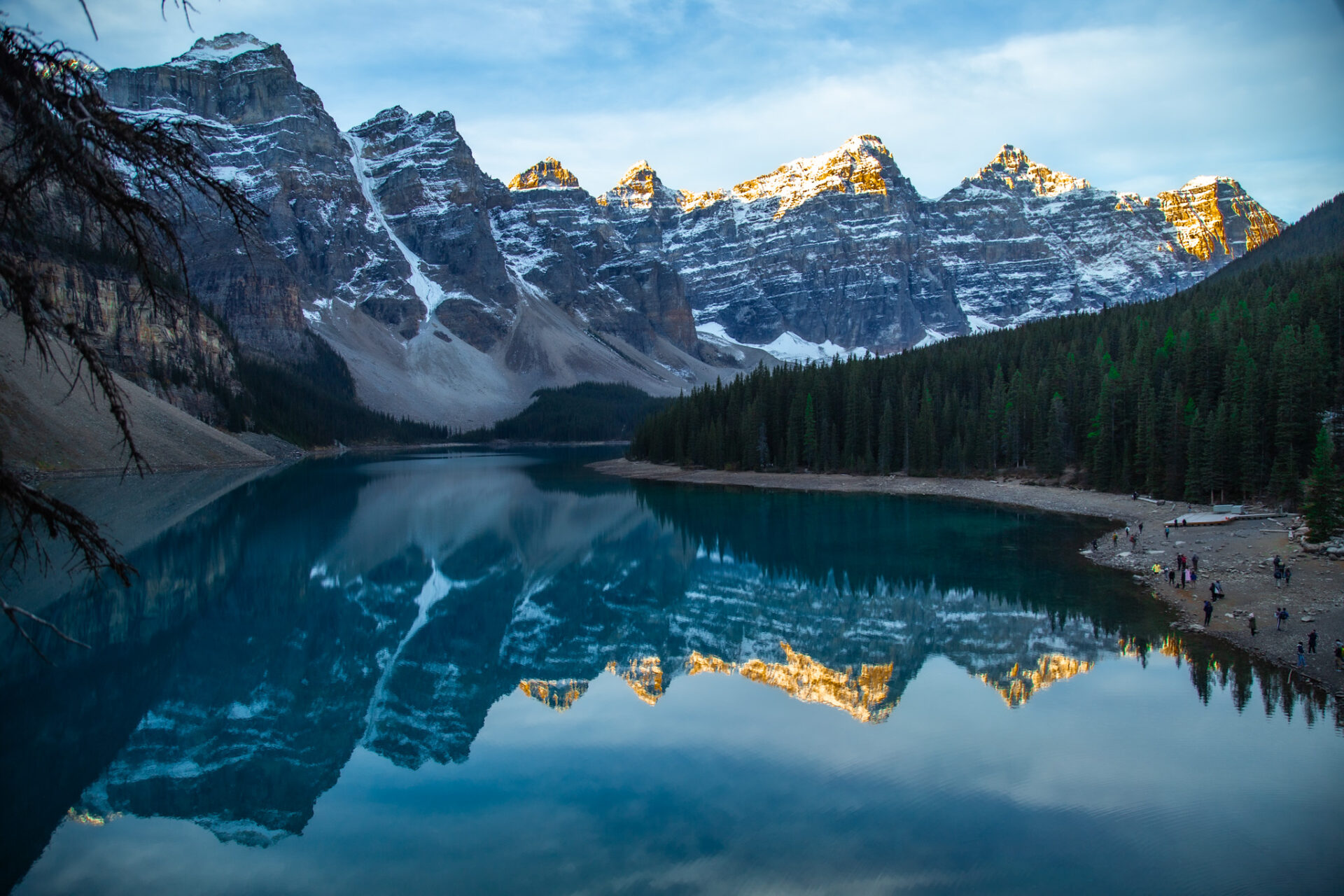
Car Related Documents
- Vehicle Registration – after 90 days moving to Banff from another province, you must register your vehicle at the Canmore Registry, get the vehicle inspected, and fix any repairs. Alberta is really picky with the inspection and doesn’t let anything slide. If you’re bringing your car when you move to Banff, make sure it’s in good condition. Call around to find the shop with the best inspection rates.
- Drivers license – after 90 days of moving to Banff from another province you’ll also need to switch your license to an Alberta one at the Banff Registry. Proof of residency and proof of citizenship is required during this process – ensure you bring the appropriate paperwork.
- Car Insurance – don’t forget that after your switch your vehicle registration to Alberta, you’ll also need to switch your vehicle’s insurance to an Albertan policy.
More Documents to Switch
- Healthcare – you’re eligible for Alberta health if you live in the province for 183 days in a 12-month period. If you plan on being in Alberta long-term, don’t waste any time and apply for this right away at the Banff Registry
- Mailing Address – don’t forget the “funnest” part of moving inter provincially – changing your mailing address. Banking details, CRA, MSCA – the list goes on and on and on.
Downfalls of living in Banff
As dreamy as it is living in Banff, there are some major downfalls worth mentioning. No place is perfect!

- People constantly come and go which means just as fast as you make friends in Banff, they’ll leave town.
- Tourism levels in the town of Banff are NUTS in the summer. Leaving your house for any reason (like errands) can be very tasking and time consuming.
- BANFF HOUSING CRISIS – this has to be the biggest downfall of living in Banff. The housing crisis only continues to get worse.
- Pay for many jobs in Banff is low and the price to live in Banff is high. Not a great duo.
- The party lifestyle is prevalent in Banff and there’s massive drug use here. It’s easy to get swept up in this lifestyle – so keep reminding yourself that the constant partying and drug use is “not normal.”
- Wildfire season can span the entire summer some years. This looks like the sky changing colours and filling with smoke for sometimes weeks on end. During this time, say goodbye to any outdoor activities for the sake of your lungs.
- Winters are very long and cold. One year I lived in Banff we had the first snowfall in town in September and the last in June the following year. Lots of grey skies – remember to take your vitamin D3!
- For skiers and hikers – the snowpack in the Rockies isn’t as strong as it is in British Columbia which means avalanche terrain is almost always very dangerous and unpredictable here.
All in all, the pros easily outweigh the cons when it comes to living in Banff. As someone who’s lived there for multiple years and plans to return in the future – I’d highly recommend moving to Banff. Even if it’s just for 1 season!
Banff Google Map: 600+ Pins

Get my 600+ Banff recommendations saved to your Google Maps app
Outdoors: 100+ hiking trails, backcountry campgrounds, ski resorts, waterfalls & lakes
Planning: lodging, restaurants, public washrooms & transit hubs
Things to do: tours, viewpoints & unique activities
I lived in Banff for years and know all the best spots!
What it’s like to Banff and everything you need to know before you move to Banff
Happy adventuring!
Taylor ♡
Like This Post?
Share with friends or save it for later!
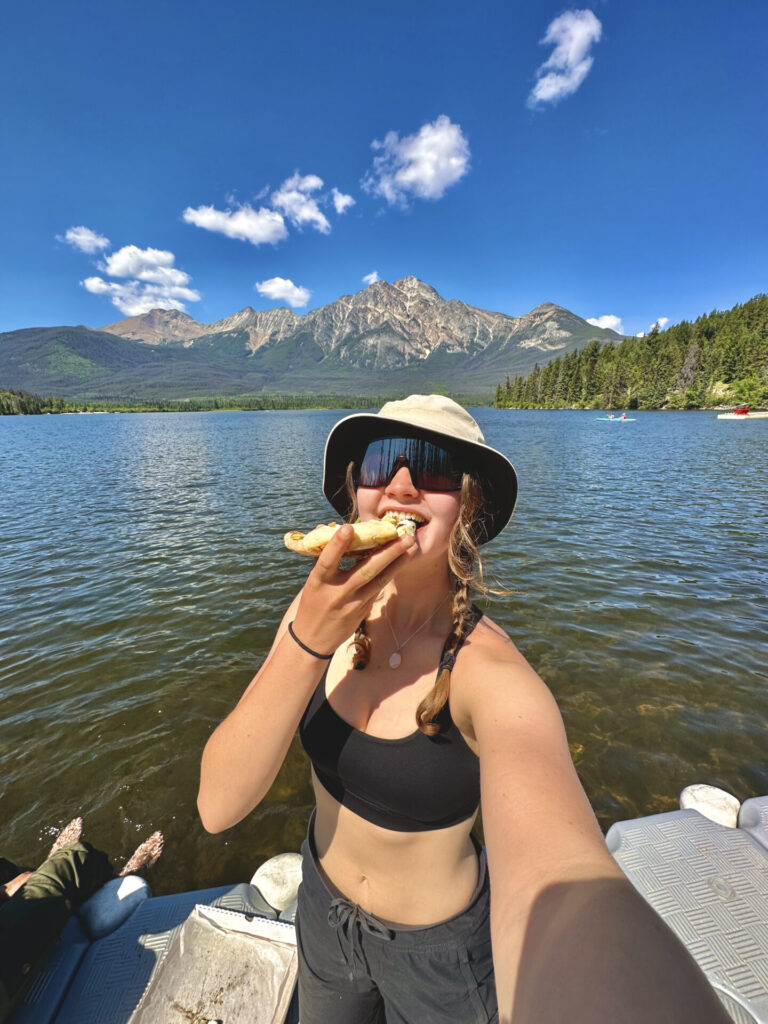
About the Author
HI, I’m Taylor – the voice behind The Holistic Backpacker.
After moving to Banff National Park in 2020 I became an outdoor adventure enthusiast and vowed to never stop exploring.
I now spend my days travelling the world, climbing mountains, and spending nights under the stars in the Canadian Rockies backcountry.
I created The Holistic Backpacker so I could share my adventures and help connect people like you with the same amazing experiences.


